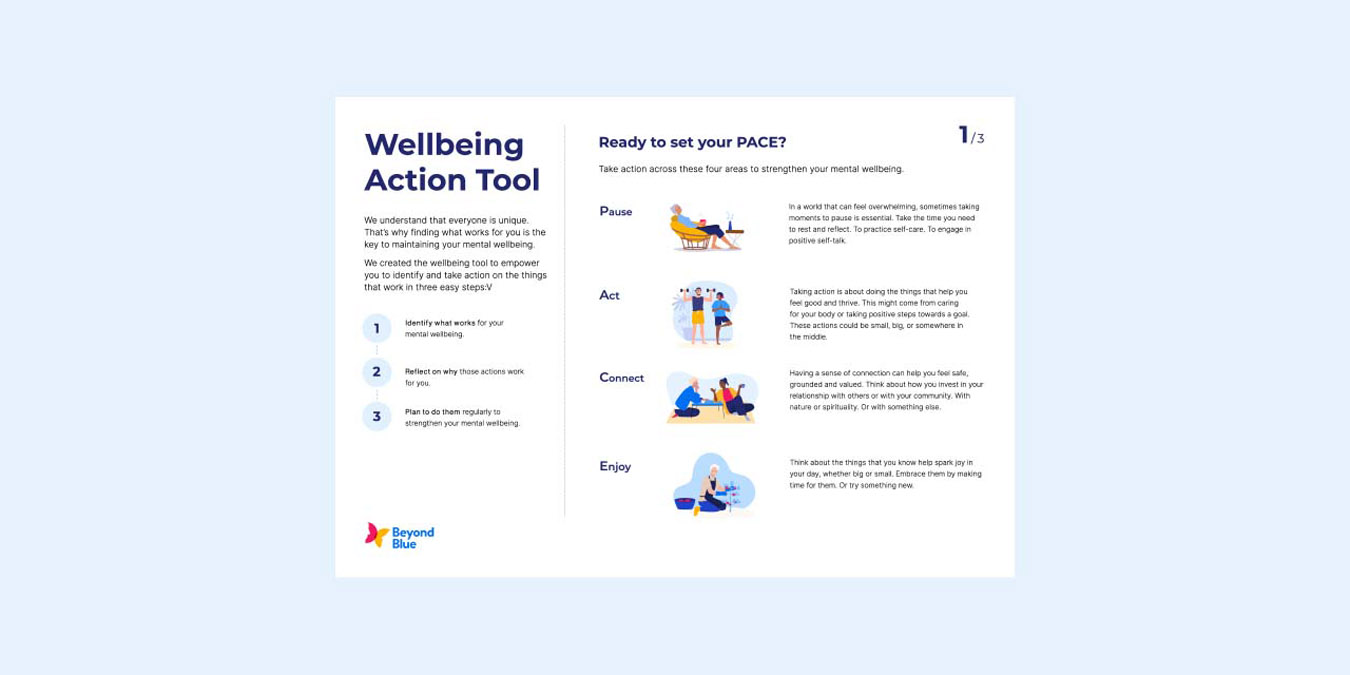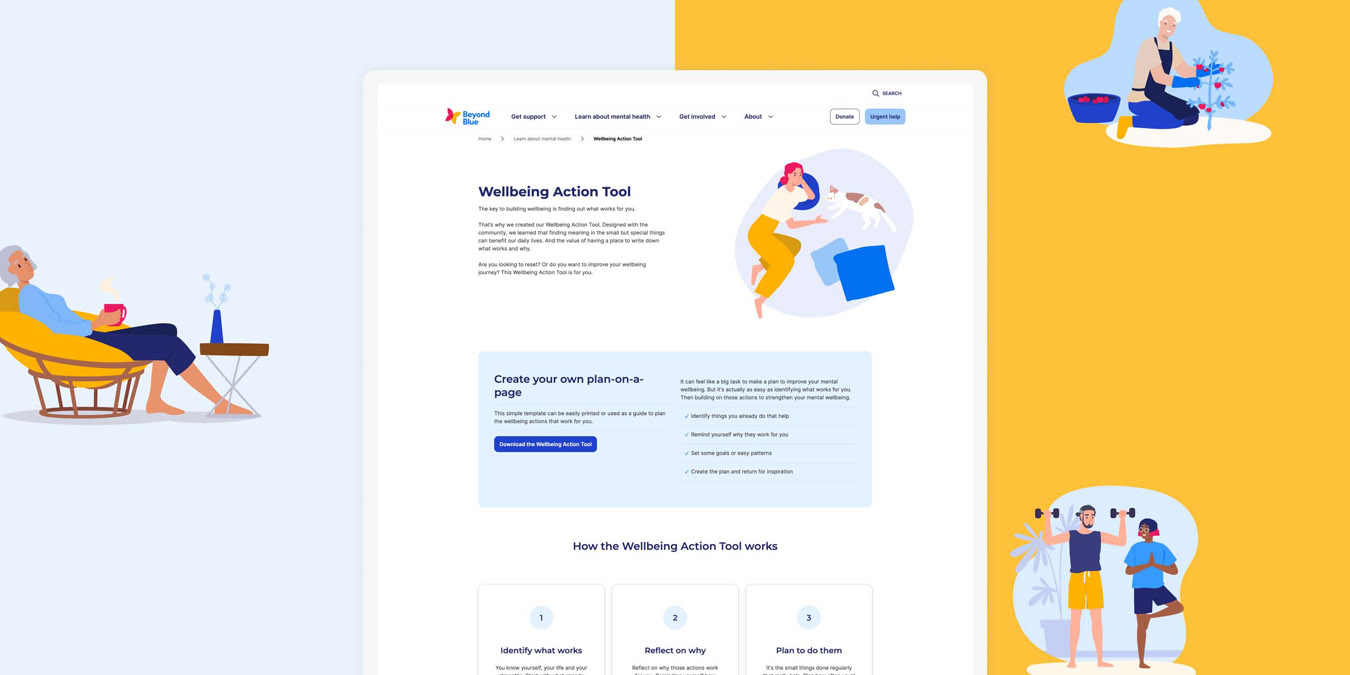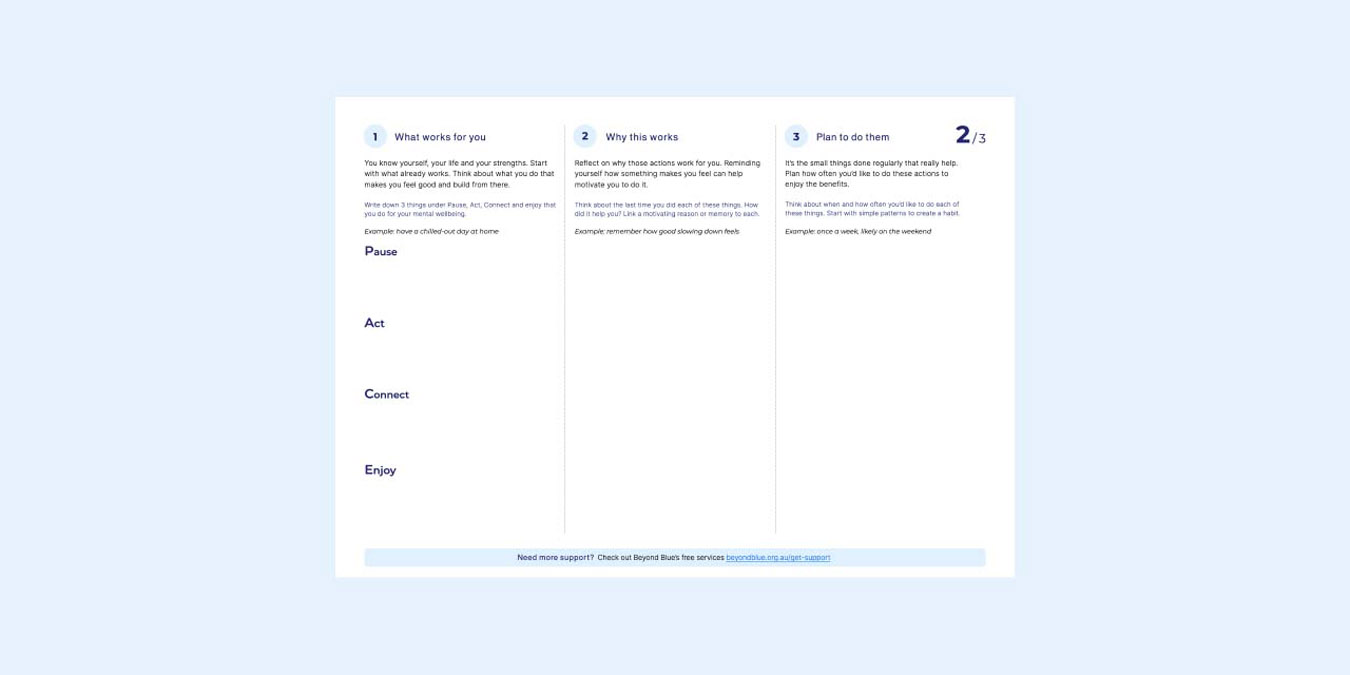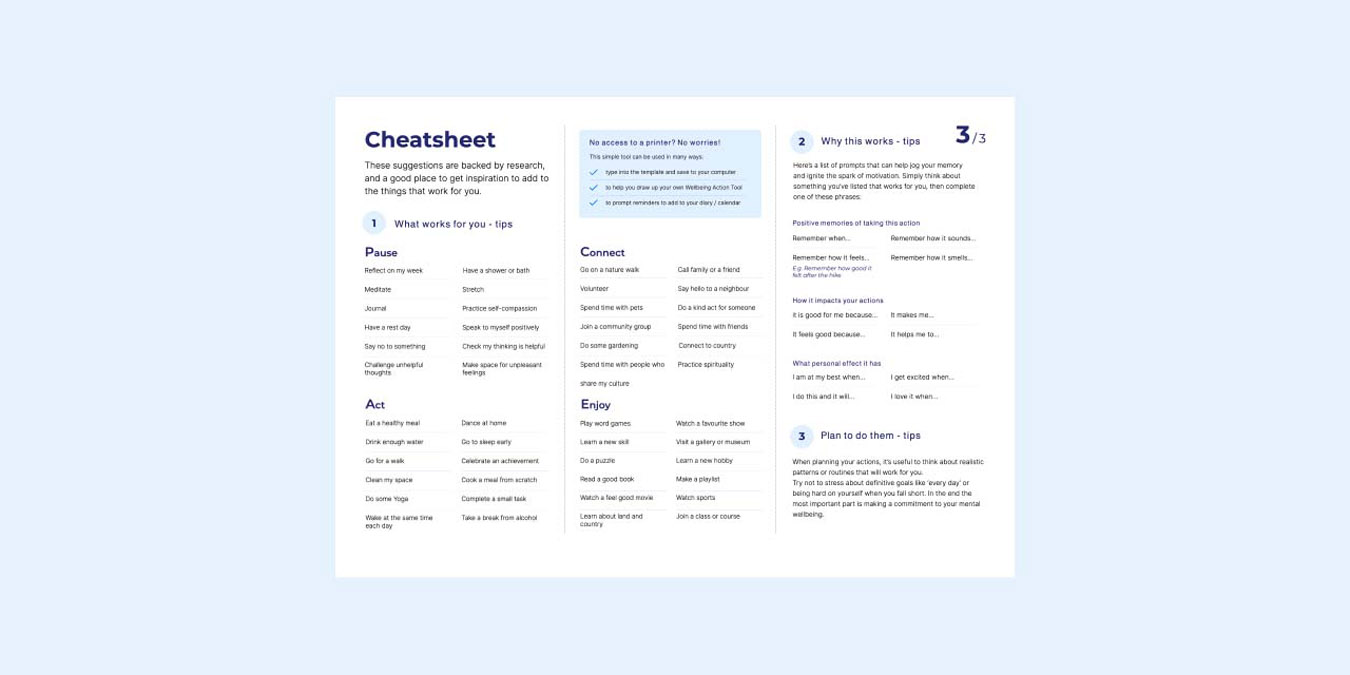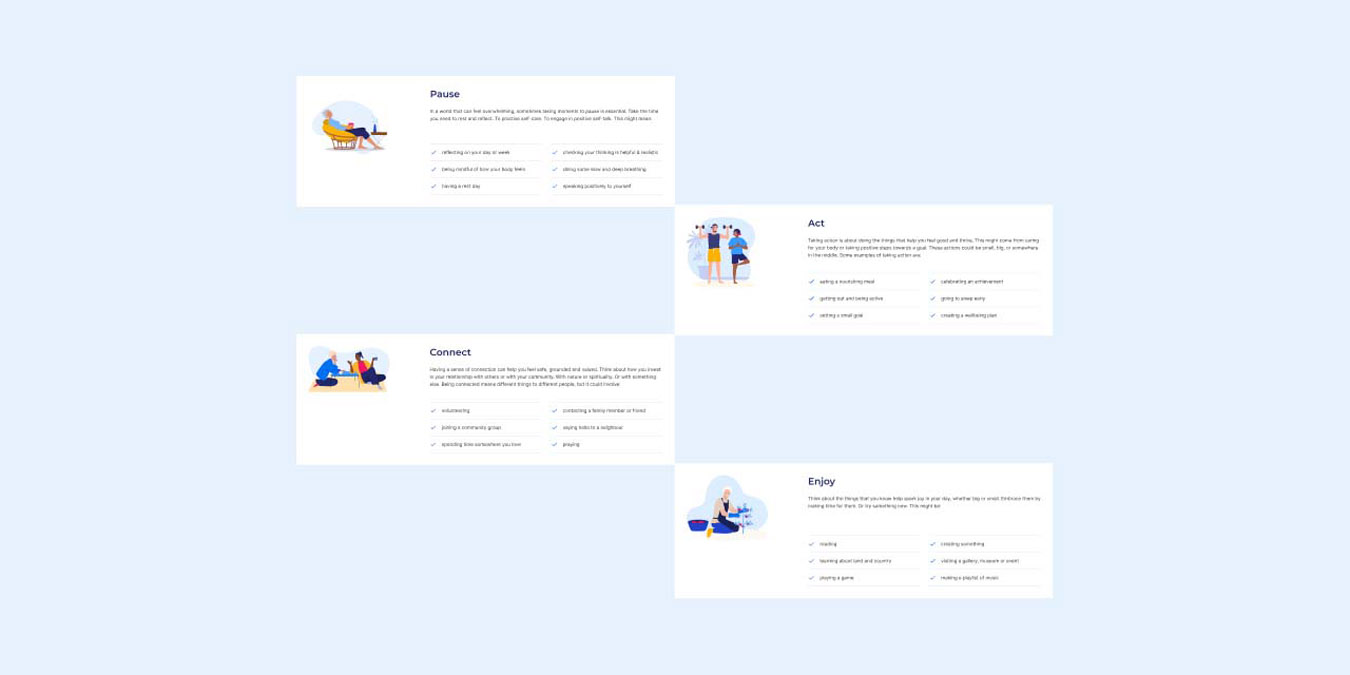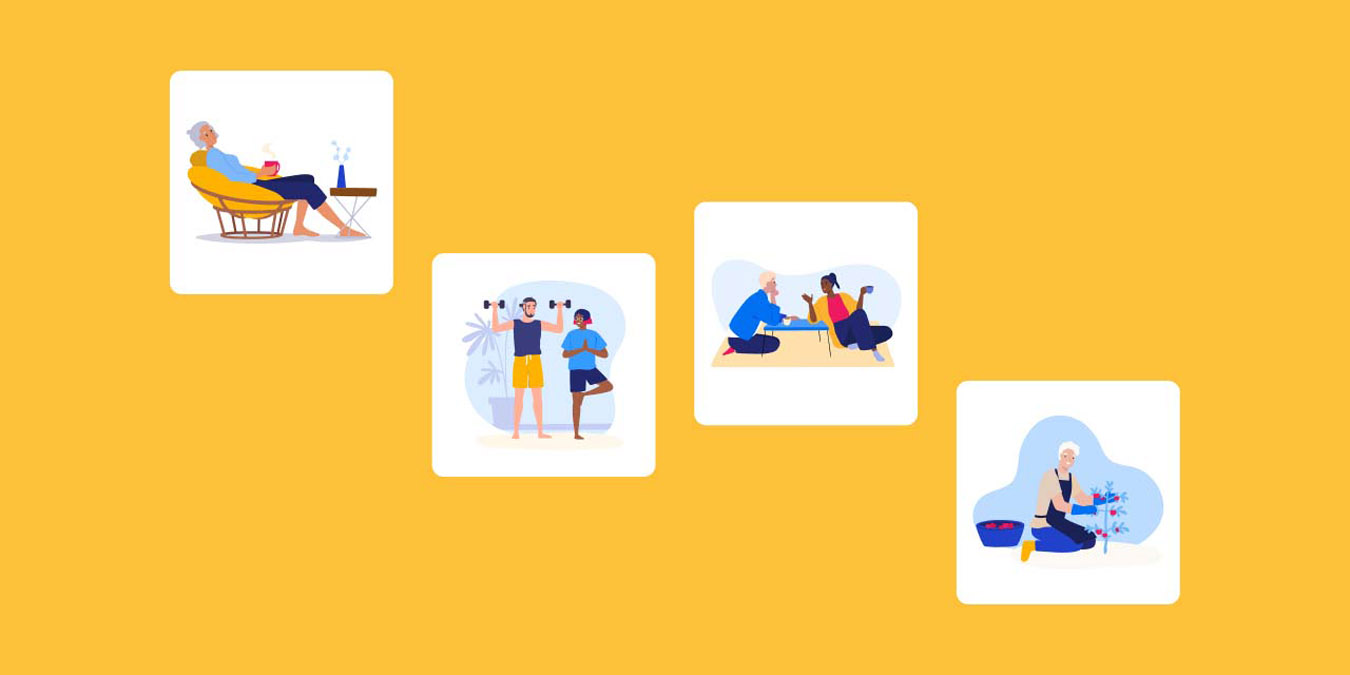Following a thorough literature review, Paper Giant co-designed PACE with a diverse group of lived-experience participants.
PACE is presented as a Plan on a Page. You can download the PDF template from the Beyond Blue website, print it out, fill out the questions, and stick it on your fridge. Beyond Blue is developing a web form version with the potential to become a mobile app.
PACE uses the catchphrase ’Pause, Act, Connect, and Enjoy’ to assist users in developing manageable routines tailored to their specific needs. The program helps identify activities that enhance mental well-being without imposing universal rules.
Paper Giant co-designed this mental wellbeing tool with nine research participants, who came from a range of backgrounds and circumstances.
The participants were very clear that they wanted an easy-to-remember acronym for this planning tool. Through Paper Giant’s discovery, testing and refinement process during workshops, participants arrived at PACE.
Beyond Blue said they were open to various formats for the planning tool. Paper Giant workshopped several solutions and prototypes (including a card game and an app). In the end, the participants overwhelmingly preferred the most straightforward and immediate solution, the Plan-on-a-Page worksheet with the handy acronym.
In the spirit of co-design, participants were given a high level of influence over the tool’s content, format, and strategic direction, and the produced outcomes were directly determined.
The Plan-on-a-Page is a simple, analogue design solution that can be used immediately. It’s suitable for people with low levels of digital literacy (and for people whose wellbeing priorities include time away from their phones!).
In the longer term, participants favoured a customisable mobile app. PACE is a personalised tool; ideally, users should be able to use it in their preferred format.

